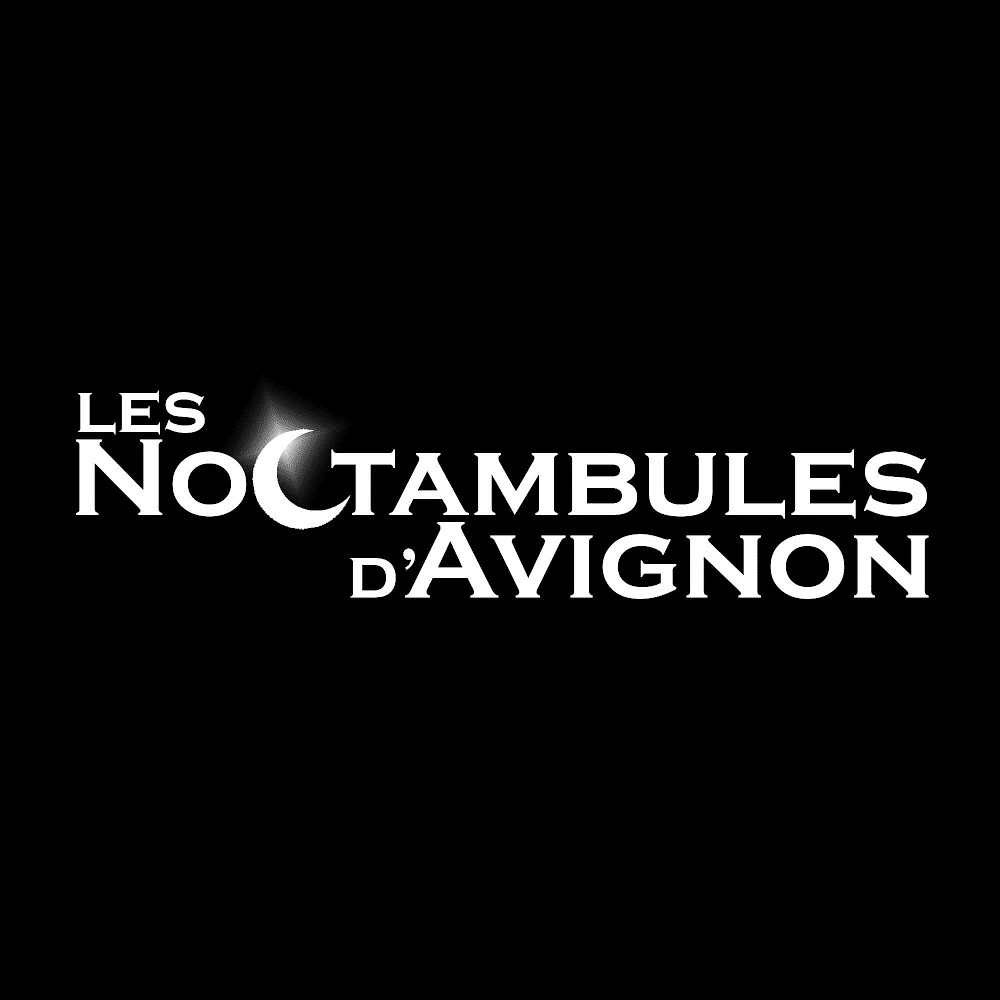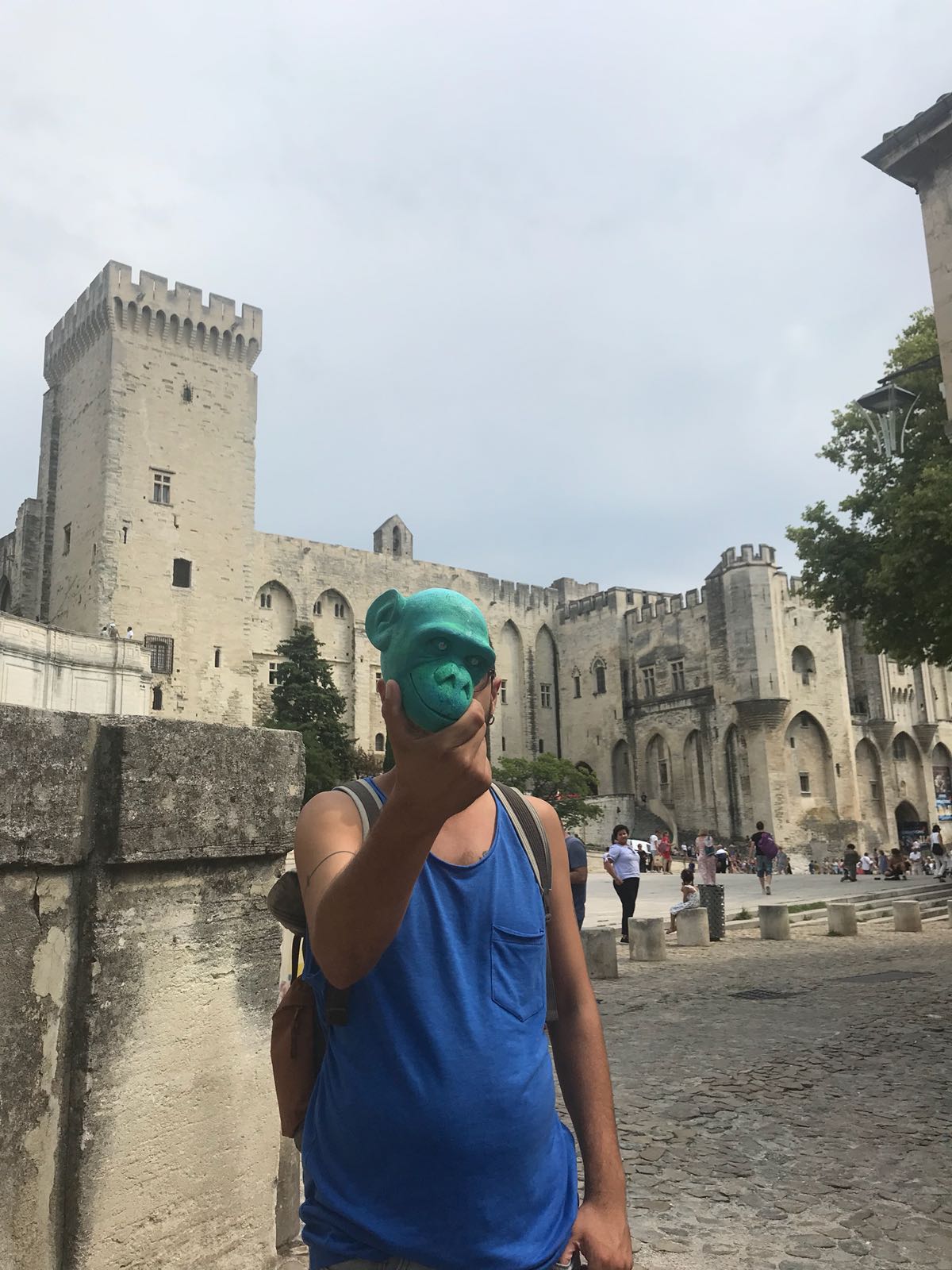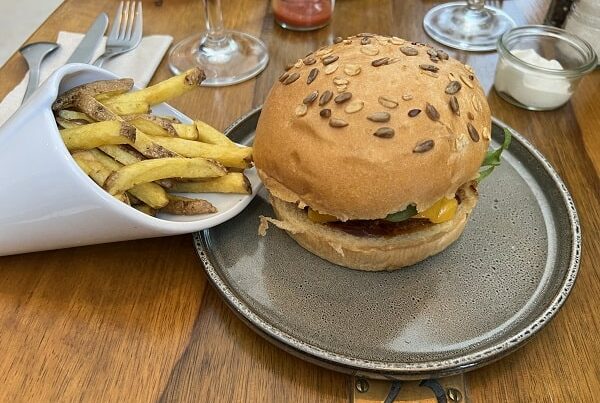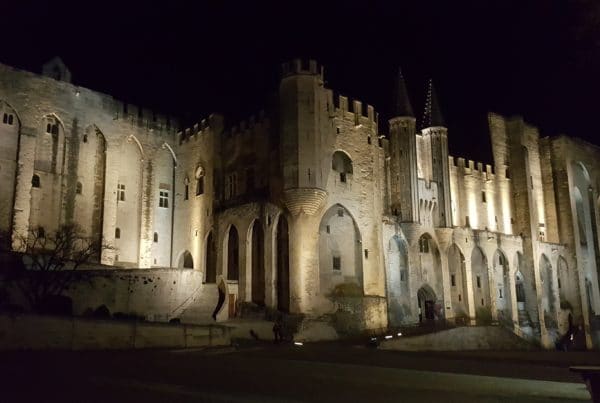This story begins on a Saturday evening, during the night owl between past and present. At the foot of the Saint-Laurent tower, I stop in front of a piece of street art by Space Invader. I’m telling the story when a woman calls out to me. “What’s that monkey head above it? I see them all over Avignon”. I didn’t know how to answer her at the time. So I decided to investigate. It enabled me to find out who was making these monkey heads. Above all, it put me in touch with this street artist.
Avignon and monkeys: a special story
This isn’t the first time that the city of Avignon has had an affair with monkeys. One of these children became world-famous with this animal
Pierre Boulle: an extraordinary Avignon man
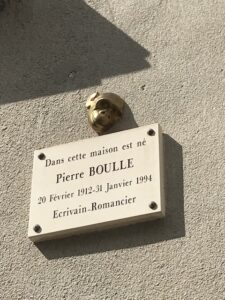
Pierre Boulle was born at number 25, rue des études, on February 20, 1912. His father, Eugène Jean Baptiste Boulle (1880-1926), an eccentric lawyer, contributed theatrical columns to a local newspaper. On July 23, 1908, he married Juliette Marie Thérèse Seguin, daughter of the newspaper’s director, in Avignon. Pierre enjoyed a very close relationship with his father: they shared a passion for literature, books, hunting and games. Even the First World War did not seem to alter the serenity of his childhood. He grew up peacefully alongside his parents and his two sisters, Suzanne and Madeleine. Towards the end of the war, in 1918, he entered the junior classes at the Lycée d’Avignon.
His father’s death changed his life. He left to work in Asia. It was there that he spent the Second World War. This experience inspired his third novel.
The Bridge on the River Kwai
In 1950, Pierre Boulle published his third novel, The Bridge on the River Kwai. It was this novel that brought him worldwide recognition.
In 1952, Pierre Boulle received the Prix Sainte-Beuve, awarded each year to a writer in the “novels and essays” category.
In 1957, it was adapted by David Lean. It was the biggest film success of the year.
Planet of the Apes
Planet of the Apes, considered a classic of science fiction and Pierre Boulle’s major work, was a huge success from the moment it was published in 1963. Since then, the novel has given rise to ten American film adaptations between 1968 and 2024, as well as two TV series broadcast in 1974 and 1975, not to mention the numerous comic strips based on it.
In the book, Professor Antelle organizes an expedition to the star Betelgeuse. He is accompanied by the physicist Levain and Ulysse Mérou, a journalist who becomes the story’s narrator and main character. They discover a planet very similar to Earth, named Soror, and decide to explore it. But their astonishment soon turns to horror when they realize that this world is dominated by apes, while humans are hunted down like wild beasts…
None of the film adaptations have really respected Boulle’s version.
I can’t recommend reading the book enough. Even if you didn’t like the films.
More than 50 years later, Avignon is reconnecting with the monkeys thanks to street artist Zorm.
Interview with Zorm, a new street artist.
Zorm is a French artist trained as a stonemason.
Where does the name come from?
The name is linked to my family name. There’s also a reference to Zorro, the masked hero. It also echoes the word zoo.
What do you like about street art?
The street is a great place to see art. It’s like a museum, but accessible to everyone. The work takes on another dimension and history depending on the history of the street and the architecture. For example, the monkey’s head on the house of Pierre Boule (author of Planet of the Apes) takes on a different meaning.
Street art is open to everyone. You don’t need to have a particular culture or sensibility to see and appreciate the works. It really is for everyone.
What’s more, you’ve got plenty of ways of expressing yourself: Graffiti, stencils, sculpture, etc.
How long have you been doing street art?
I started again in February 2018 with this monkey heads project. Before that, in 2006, I had put up pig heads in the twentieth arrondissement of Paris.
Why do you depict monkey heads?
In my work, I’m more interested in animals than humans. They’re very close to us, but we’re destroying them. I express our humanity through the monkey. I was inspired by the Bonobos, a species close to us but on the verge of extinction. Despite this, I depict them smiling, because I want to keep an optimistic side to my work.
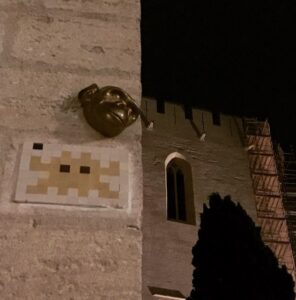
Monkey head in Avignon
What are your sources of inspiration?
In street art, there aren’t many 3D works. So I draw my inspiration from other arts. I draw a lot of my inspiration from sculptors. My inspirations are varied. They range from Michelangelo’s work on a single block to Ron Mueck’s hyperrealistic sculptures. After that, I prefer to work with my feelings rather than draw inspiration from them.
You have one of your works on the Popes’ Palace.
What do you say to people who think you’re distorting this monument?
I don’t think I’m distorting the monument. At the Palais des Papes, for example, each stone has its own history. During the revolution, statues were decapitated. Street art is a new art form that’s evolving. It’s another form of history written on walls. We use walls to say things, to make people react.
Is there anywhere you’d like to put your head?
No, there’s no specific place. Each place has its own interest.
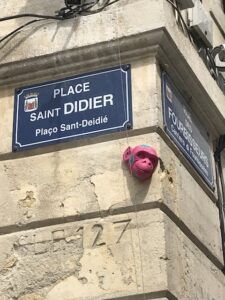
Street artist in Avignon
Do you see yourself becoming a street artist exclusively?
The monkey head project took shape this year, so I don’t have a longer-term vision. But for me, street art is a way of expressing myself.
If you want to follow Zorm’s work, you can subscribe to his Instagram account.

